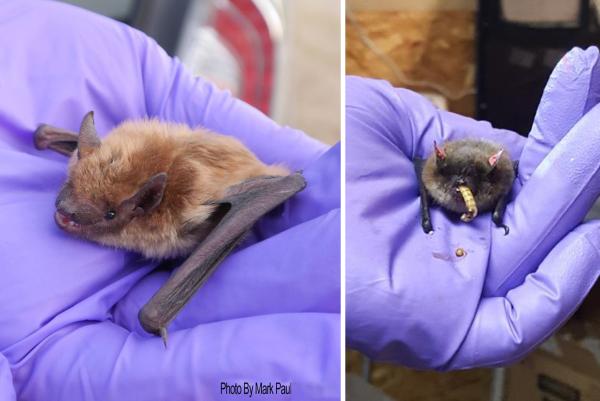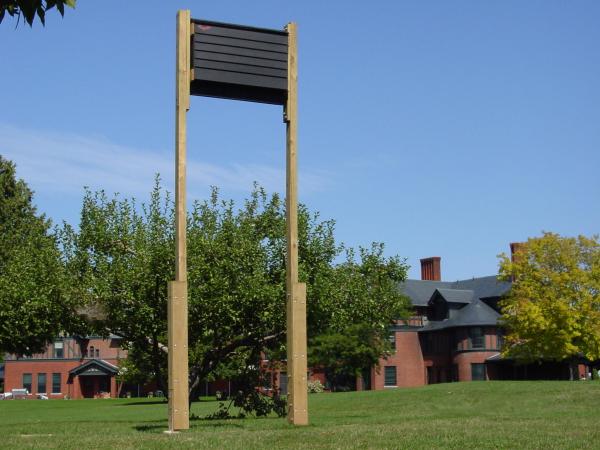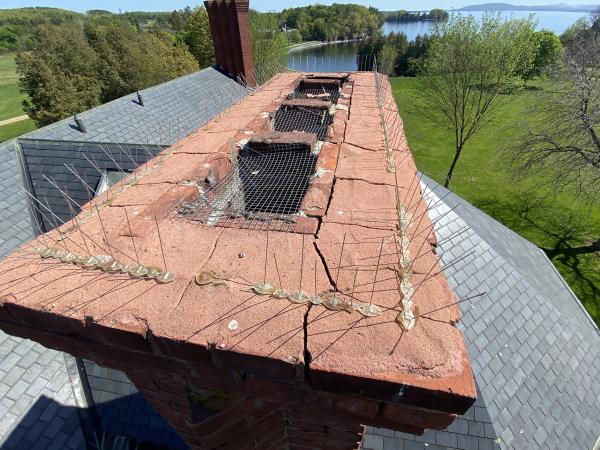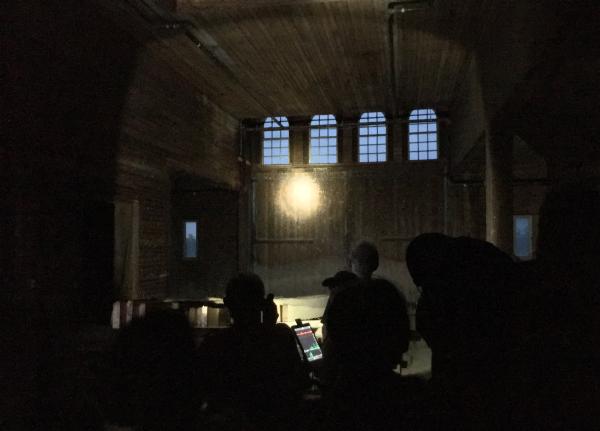How marvelous that you are helping bats! We used to have quite a few, but not so anymore and our bat house of many years is empty. But I do wonder that you will replace the old bat house. Shouldn't you put up the new one and let them move to it, before destroying the old one, or just have both?
Going to Bat for Bats
In early June, Barry Genzlinger of the Vermont Bat Center submitted a final report on the Farm’s long-term efforts to exclude bats from the Inn at Shelburne Farms. This blog is based on his report, with many thanks for all his work here at the Farm and across Vermont to educate people about the biology, ecology, and value of bats.
Old buildings have charm, character, craftsmanship, and, often...bats. That has been true for the Inn at Shelburne Farms over the years. Built in 1888 as a private residence and converted to an inn in 1987, the building probably became a summer home to little brown bats (Myotis Lucifugus) beginning in the 1950s.
While not generally welcome indoors, bats are a critical piece in the ecological web. A single little brown bat can catch 1,200 mosquito-sized insects an hour! Yet since 2007, their populations have been decimated by White Nose Syndrome, a fungal disease, and they are now an endangered species.
Thankfully, our exclusion efforts at the Inn have not just helped keep little brown bats out of the building, they’ve created new homes for these beleaguered mammals.
When they first took up residence at the Inn, little brown bats were the most plentiful species of bats in North America. Hibernating over the winter in caves they’ve inhabited for millions of years, they’d return each summer to roost and build maternity colonies in buildings across the Farm. (Buildings are one of their favorite summer homes.) As their total on-Farm population grew to the thousands, the bats consumed hundreds of millions of bugs in their nightly foraging. They’d also occasionally take a wrong turn into the inn’s halls or bedrooms.
In keeping with the Farm’s environmental principles, extermination was never an option, so in the late 1990s, a major effort began to safely exclude the bats from the attic. The building had developed hundreds of small cracks in soffits and around chimneys over the years, offering bats easy access. The chimneys also allowed them to fly directly into rooms on occasion.
An inspection of the attic space in 2000 confirmed that it held hundreds of bats, and highlighted the enormity of the exclusion task. A long-range plan was formulated and implemented over the next 10 years.
In 2001, a large bat house with a capacity for 800 bats was installed on the front lawn of the Inn. The hope was that as the Inn was tightened up, the attic bats would relocate here for their summer roosting. Over time, the guano in the attic was cleaned up and large cooling fans were installed to make the space less inviting for bats. Obvious entry points in the soffits were repaired, unused chimneys were capped, and fireplaces sealed. Finally, all storage areas that could be bat conduits from the attic to the interior were secured with tight-fitting doors.
With the inn not opening as usual this year due to COVID-19, we took the opportunity to assess our exclusion plan. The results of a May 29, 2020 inspection are encouraging. The attic shows no evidence of colonial groups and almost no evidence of any recent bat activity. Typical roosting areas that had been piled with droppings several inches deep in 2000 now have an occasional fresh dropping. Not a single bat was observed.
Further house inspection was likewise positive. All the unused room fireplaces were tightly sealed. None of the storage closets had a single bat dropping, and all their doors were tight fitting. Halls and rooms on the second and third floors had no loose molding or wall cracks.
But perhaps our greatest success is that the bat house on the Inn lawn now houses one of the largest maternity colonies of endangered little brown bats in Vermont! With a peak summer occupancy of almost 500 bats, the colony continues to grow in size and has reached record levels after the devastation caused by White Nose Syndrome.
Do all the multi-year efforts mean that there will never be a bat inside the Inn again? It’s not guaranteed. But if a bat guest shows up, the Inn staff is now trained in how to properly capture and remove it.
Education has been happening publicly as well. Working with Barry Genzlinger of the Vermont Bat Center, we have introduced hundreds of people to the value of bats in the ecosystem through our annual summer “Bats in the Barn” program for families and “Bats on the Farm” program for adults. (Both programs have been suspended due to COVID-19).
But the work is never done. Now, after almost 20 years of service, the bat house is showing its age and --happily--is almost at its capacity. Over the next couple of years, it’s recommended that the bat house be replaced and a second one installed so that the Farm can welcome bats for years to come!
To learn more about bats, and how you can help support their recovery from White Nose Syndrome.
- Vermont Bat Center
- Attracting Vermont's Bats: what you should know about bat houses. Vermont Department of Fish & Wildlife
- Bat World Sanctuary
Comments
What a great story and great outcome for all.
I grew up with bats in a house that had been part of a dairy farm (a big colony lived up in the attic) they colony had been there probably for close to 100 years - occasionally one would get downstairs into the lower house..no big deal - my father was a science teacher and had great respect for them so he was careful to catch them gently and let them go...they love barns and with the loss of barns in Vermont many have lost their homes- I am SO glad Shelburne Farms is helping them...bats RULE!!!




